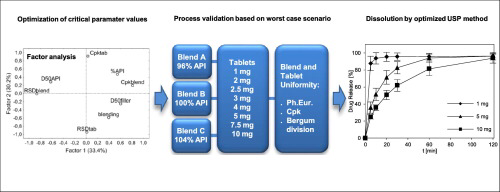- Home
- Blog
- News
- Basics
- Sources
- Agencies, Regulatory & Organisations
- CERSI Excipients Browser
- Excipient Report
- Excipient DMF List
- EXCiPACT Certified Companies
- Excipient Documentation
- Excipient EINECS Numbers
- Excipient E-Numbers
- FDA Inactive Ingredient List
- FDA GRAS Substances (SCOGS) Database
- IPEC Americas
- USP - U.S. Pharmacopeia
- Definitions
- Whitepapers / Publications
- Supplier
- Services
- Media
- Events
- 1st pharmaexcipients Poster Award
- Event Calendar
- Events featured by pharma-excipients
- 4th Annual Formulation & Drug Delivery Congress
- DDF Summit
- ExcipientFest Americas
- ExcipientFest Asia
- Global CompliancePanel
- International Conference and Exhibition on Pharmaceutics & Novel Drug Delivery Systems
- Formulation & Drug Delivery USA Congress
- Laboratory Medicine 2018
- Making Pharmaceuticals Europe
- Making Pharmaceuticals Exhibition
- Pharma Integrates
- PharmaExcipients China @CPhI China
- TTC Technology Training Center
- Jobs
- Online Sourcing
- Contact
20. August 2018
Based on characterization of a wide range of fillers and APIs, thirty divergent blends were composed and subsequently compressed on a rotary tablet press, varying paddle speed and turret speed. The tablet weight variability was determined of 20 grab samples consisting of each 20 tablets. Additionally, the bulk residence time, ejection force, pre-compression displacement, main compression force, die fill fraction and feed frame fill fraction were determined during each run. Multivariate data...
16. September 2017
Abstract Warfarin is intensively discussed drug with narrow therapeutic range. There have been cases of bleeding attributed to varying content or altered quality of the active substance. Factor analysis is useful for finding suitable technological parameters leading to high content uniformity of tablets containing low amount of active substance. The composition of tabletting blend and technological procedure were set with respect to factor analysis of previously published results. The...
03. March 2017
Abstract A 23 Factorial design of cissus-gelatin B polymer blends was developed to formulate amodiaquine HCl-artesunate (AQ-AS) microparticles by varying the polymer blend concentration (2 %w/v, 5 %w/v), crosslinking time (0.5 h, 1 h) and glutaraldehye volume (0.5 ml, 1 ml). The formulations were evaluated using drug entrapment efficiency (EE), particle size, polydispersity index, thermal behaviour with differential scanning calorimetry, crystallinity with powder X-ray diffraction, morphology...
25. July 2016
Abstract Edible films from the blending hydroxypropyl methylcellulose (HPMC) with hydroxypropyl starch (HPS) have been developed. This work focuses on the relationship between morphologies and mechanical properties of such systems. To aid understanding of blend morphology, a new technique used to identify the two phases through dying of the HPS by iodine has been developed, which provided a simple and convenient way to clearly distinguish between HPMC and HPS phases. It was found that the blend...
19. July 2016
Abstract Oral disintegrating film represents an optimal alternative for delivery system of active compounds. The choice of film-forming polymer is the first step in the development of oral disintegrating films and the knowledge of molecular interactions in this matrix is fundamental to advance in this area. Therefore, this study aimed to characterize gelatin and hydroxypropyl methylcellulose (HPMC) films and their blends as matrices of oral disintegrating films. The films were produced by...
17. February 2016
Free hydroxyl groups of glucose monomer of starch substituted with steroyl group by chemical modification leads to the formation of starch stearate (SS). Modification changes the nature from hydrophilic to hydrophobic and thus used as controlled release excipient. In present study, SS was evaluated as release modifying polymer and MCC, Lactose, Dicalcium phosphate (DCP) and combinations of these were used to evaluate effect on drug release of Verapamil hydrochloride (VH) and Diclofenac sodium...
06. July 2015
The objective of this study was to investigate the suitability of “Eudragit® RL/Eudragit® L55” (RL/L55) blend coatings for a pH-independent release of acidic drugs. A coating for ketoprofen and naproxen mini tablets was developed showing constant drug release rate under pharmacopeial two-stage test conditions for at least 300 min. More


